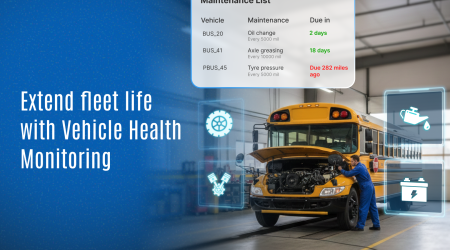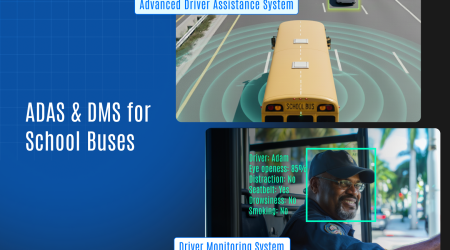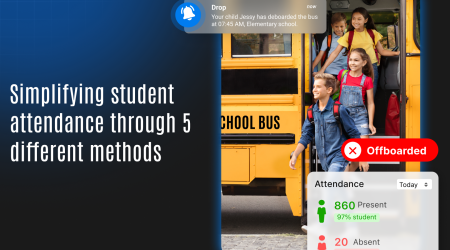Reducing Operational Costs with Advanced Route Planning in Commute Management
In today’s world, school budgets are tighter than ever. Administrators seek ways to cut costs without compromising the quality of education. One area often overlooked is transportation. For a school, the implementation of advanced route planning through school bus monitoring software has proven to be a game-changer. This case study delves into how a school has successfully reduced their operational costs by optimizing their bus routes and monitoring systems.
Overview of the Case Study
This blog will explore the journey of a school in integrating advanced route planning into their transportation system. We’ll cover the challenges faced, the solutions implemented, and the impressive results achieved. By the end of this case study, you’ll understand the significant impact of advanced route planning on school transportation efficiency and cost savings.
Challenges Faced by the school
The schools, like many educational institutions, grappled with various transportation issues. Rising fuel costs, inefficient bus routes, and outdated monitoring systems were just a few of the hurdles. These challenges not only strained the budget but also compromised student safety and punctuality.
- Inefficient Bus Routes: With manually planned routes, buses often traveled unnecessary miles, increasing fuel consumption and wear and tear on vehicles.
- High Fuel Costs: Inefficiencies in routing led to higher fuel usage, directly impacting the school’s budget.
- Student Safety Concerns: Without real-time monitoring, ensuring student safety during transit was challenging.
- Operational Inefficiencies: Lack of data and insights made it difficult to manage the fleet effectively.
Solution: Advanced Route Planning with School Bus Monitoring Software
To address these issues, the school turned to advanced route planning and school bus monitoring software. The decision was driven by the need to optimize routes, enhance safety, and reduce operational costs. The software chosen offered comprehensive features that streamlined the entire transportation process.
Implementation Process
The implementation process was meticulous and phased to ensure minimal disruption. Here’s how the school executed it:
- Needs Assessment: A thorough assessment identified specific needs and challenges. The focus was on improving route efficiency and ensuring student safety.
- Software Selection: After evaluating several options, the most suitable school bus monitoring software was chosen. It offered features like advanced route planning, real-time tracking, with detailed reporting.
- Training: Comprehensive training sessions were conducted for transportation staff to ensure they could effectively use the new system.
- Integration: The software was seamlessly integrated into the existing infrastructure. This included syncing with GPS devices on the buses and setting up a centralized monitoring system.
- Pilot Phase: A pilot phase was launched to test the system. Feedback from this part was used to make necessary amendments.
- Full Deployment: After successful testing, the software was fully deployed across all buses in the fleet.
Key Features of the Software
The school bus monitoring software brought several key features that were instrumental in transforming the school transportation system:
- Advanced Route Optimization: The software uses algorithms to plan the most efficient routes, reducing travel time and fuel consumption.
- Real-Time Tracking: Administrators can track buses in real-time, ensuring student safety and timely arrivals.
- Automated Notifications: Parents receive notifications about bus arrivals, delays, and any changes in the route, providing peace of mind.
- Detailed Reporting: The software generates detailed reports on fuel usage, driver behavior, and route efficiency, helping in data-driven decision-making.
- Geofencing: Customizable geofencing alerts administrators when buses enter or leave predefined areas, enhancing security.
Benefits Realized
The transition to advanced route planning and monitoring software brought about significant benefits for the school:
- Cost Savings: Optimized routes led to substantial fuel savings and reduced maintenance costs due to lesser wear and tear on buses.
- Improved Safety: Real-time tracking and automated notifications ensured better student safety.
- Operational Efficiency: Detailed reports and insights enabled better management and strategic planning.
- Environmental Impact: Reduced fuel consumption contributed to lower carbon emissions, supporting the school’s sustainability goals.
Detailed Analysis of Cost Savings
The most striking benefit observed was the cost savings. By analyzing the data over a year, the following insights were gained:
- Fuel Consumption Reduction: There was a 20% reduction in fuel consumption, translating to significant savings.
- Maintenance Costs: With optimized routes, buses traveled fewer miles, leading to a 15% reduction in maintenance costs.
- Driver Hours: Efficient routing resulted in fewer hours spent on the road, reducing overtime payments and improving driver satisfaction.
- Overall Savings: The combined savings from fuel, maintenance, and labor resulted in a 25% reduction in overall transportation costs.
Case Study: Before and After Implementation
To illustrate the impact, let’s compare the state of the school transportation before and after implementing the software:
Before Implementation:
- Average Route Distance: 50 miles per bus
- Fuel Consumption: 2000 gallons per month
- Maintenance Costs: $5000 per month
- Driver Hours: 200 hours per week
After Implementation:
- Average Route Distance: 40 miles per bus
- Fuel Consumption: 1600 gallons per month
- Maintenance Costs: $4250 per month
- Driver Hours: 160 hours per week
These figures highlight the substantial improvements in efficiency and cost savings achieved through advanced route planning.
Enhancing Student Safety
Student safety is paramount for any school. The advanced route planning software contributed significantly to enhancing safety:
- Real-Time Tracking: Enabled quick response in case of any issues during transit.
- Geofencing Alerts: Immediate alerts when buses deviated from the designated routes.
- Parental Notifications: Regular updates to parents about their child’s realtime location and bus status.
- Driver Monitoring: The software monitored driver behavior, ensuring adherence to safety protocols.
Parental and Community Feedback
The implementation of the advanced route planning software received overwhelmingly positive feedback from parents and the community. Parents appreciated the transparency and the real-time updates, which gave them peace of mind. Community members noticed the positive environmental impact due to reduced emissions and praised the school’s efforts in sustainability.
Future Plans and Continuous Improvement
The school is committed to continuous improvement. Future plans include:
- Periodic Reviews: Regular reviews of the software’s performance to identify areas for improvement.
- Feedback Mechanism: Establishing a feedback mechanism for parents, drivers, and staff to continuously refine the system.
- Technology Upgrades: Staying updated with the latest advancements in transportation technology to ensure optimal performance.
- Expansion: Considering the expansion of the system to other areas such as field trips and extracurricular activities.
Conclusion
The case of the school exemplifies how advanced route planning and school bus monitoring software can revolutionize school transportation. The benefits extend beyond cost savings to encompass improved safety, operational efficiency, and environmental sustainability. For schools grappling with transportation challenges, this case study serves as a compelling example of the transformative power of technology.


